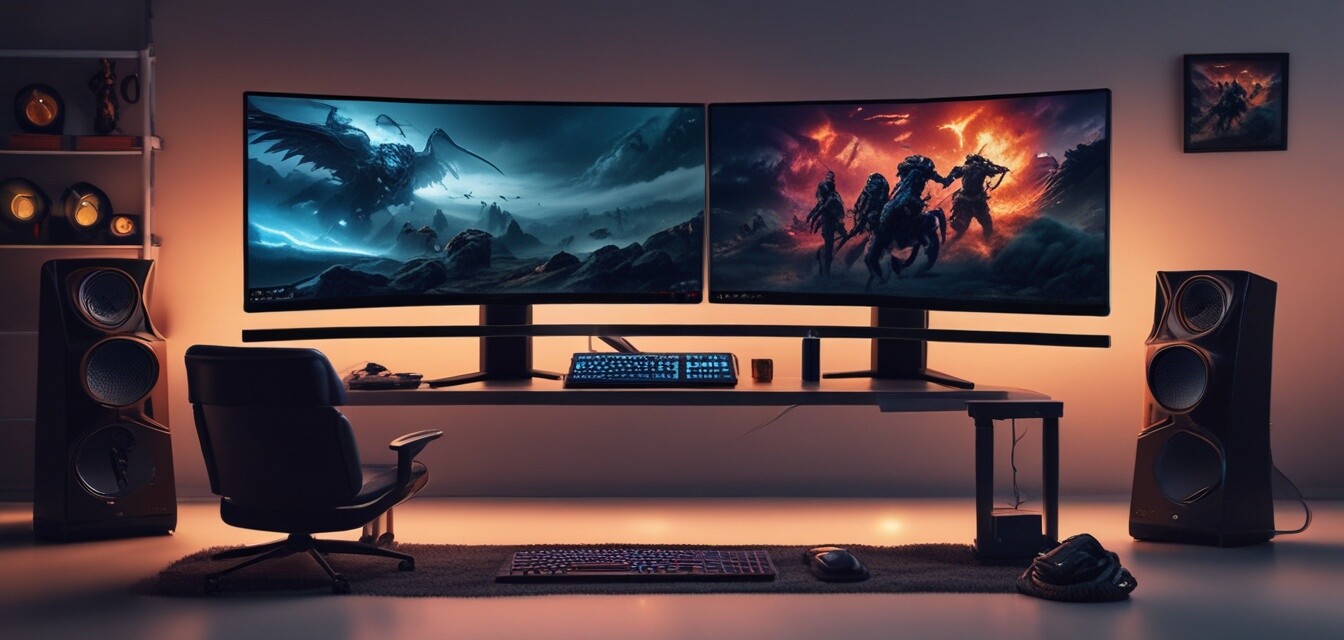
How to set up a multi-monitor gaming environment
Key Takeaways
- Choose the right monitors based on resolution and refresh rate.
- Invest in quality stands or mounts for optimal arrangement.
- Consider using an appropriate graphics card to support multiple displays.
- Stay organized with proper cable management solutions.
- Don't forget accessories like gaming keyboards and headsets for a complete setup.
Creating a multi-monitor gaming environment can significantly enhance your gaming experience, allowing you to immerse yourself in gameplay like never before. With the right accessories, you can set up a system that not only looks great but also operates efficiently. In this guide, we will walk you through the essential steps and considerations for setting up an efficient multi-monitor gaming environment.
Why choose a multi-monitor setup?
A multi-monitor setup provides various advantages for gamers, including:
- Enhanced screen real estate for multi-tasking.
- More immersive experience with wider field-of-view.
- Improved organization of applications and games.
Choosing the right monitors
When selecting monitors for your gaming setup, consider the following:
| Feature | Importance | Recommendations |
|---|---|---|
| Resolution | Higher resolution offers clearer visuals. | 1080p for budget setups; 1440p or 4K for immersive experiences. |
| Refresh Rate | A higher refresh rate leads to smoother gameplay. | 60Hz minimum; 144Hz or higher is ideal. |
| Screen Size | More screen space for wider gaming view. | 24” to 32” is commonly recommended. |
| Panel Type | Affects color accuracy and viewing angles. | IPS panels for vibrant colors; TN panels for faster response times. |
Setting up your monitors
Once you’ve chosen your monitors, it’s time to arrange them for optimal performance. Here are some tips:
- Use a monitor stand or mount to save desk space and adjust height.
- Position your monitors at eye level to reduce neck strain.
- Ensure your main monitor is directly in front of you for the best experience.
Graphics card requirements
To ensure your system can handle a multi-monitor setup, you’ll need a compatible graphics card. Consider these points:
- Make sure it has enough ports to support multiple monitors.
- Check the specifications to ensure it can handle the resolutions you plan to use.
- Consider the performance demand of the games you play.
Cable management solutions
Keeping your gaming area tidy is essential, especially in a multi-monitor setup. Here are some cable management tips:
- Use cable ties or clips to bundle cables together.
- Label cables for easy identification.
- Consider a cable management box to hide excess cables.
Essential accessories for your setup
In addition to monitors and a graphics card, consider investing in the following accessories:
- Gaming controllers for a better gaming experience.
- High-quality headsets to immerse yourself in sound.
- Performance enhancers for that extra edge.
Additional tips for optimizing your gaming experience
Here are some tips to further enhance your multi-monitor gaming experience:
- Calibrate the colors of your monitors for a uniform look.
- Adjust in-game settings to fit your multi-monitor resolution.
- Keep your software updated to maintain compatibility and performance.
Pros
- Increased productivity and gaming immersion.
- Ability to multitask and stream while gaming.
- Sleeker, customized gaming environment.
Cons
- Higher cost involved in setup and accessories.
- Requires a more powerful graphics card.
- Potential for clutter without good cable management.
Conclusion
Setting up a multi-monitor gaming environment can transform your gaming experience. By carefully selecting your monitors, organizing your workspace, and investing in essential accessories, you can create an immersive and functional setup. Remember to plan your arrangement to maximize performance and convenience. Happy gaming!